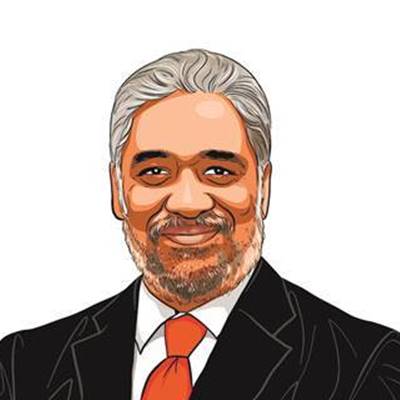Opinion Mongolian connection
While our strategic community reacts anxiously to Beijings deepening ties with Indias neighbours,it devotes little attention to Delhis pro-active diplomacy in Chinas periphery.
Mongolian connection
While our strategic community reacts anxiously to Beijings deepening ties with Indias neighbours,it devotes little attention to Delhis pro-active diplomacy in Chinas periphery. Consider,for example,the sparse media coverage of President Pratibha Patils trip to Mongolia last week.
The first visit by an Indian president to Mongolia in a quarter of a century is not a diplomatic accident. It was part of a conscious effort to celebrate the deep civilisational and spiritual links between India and Mongolia. It was also about getting Indian business to join the economic boom under way in mineral-rich Mongolia. If neither of these themes was surprising,the agreement to strengthen bilateral defence cooperation signed during Patils visit is a significant element. The defence agreement enables a range of cooperation,including training,high-level military exchanges,and joint exercises.
Security cooperation with Mongolia adds a new dimension to Indias Look East policy which,by geographic circumstance,involves building stronger ties with Chinas neighbours. Although its initial focus was on economic cooperation,the strategic content of the policy has steadily expanded to include the cultivation of security partnerships in the Asia and the Pacific.
In recent years,India has stepped up its defence diplomacy with many East Asian countries,including Japan,South Korea,Vietnam,Indonesia,Singapore and Australia. While most of these countries form Beijings maritime periphery,Mongolia is geographically different. Located in inner Asia,Mongolia is landlocked by its two great neighbours,Russia and China.
During the Cold War,Mongolia was a buffer that leaned towards the USSR. After the collapse of the USSR,it embarked on a dynamic policy of building multiple partnerships and raising its international profile. During the last two decades,Mongolia has worked hard to balance its two large neighbours China and Russia and reached out to the US,Europe and Japan. In its effort to reaffirm its national identity and preserve its autonomy,Mongolia has also begun to look at India.
The US often called the third neighbour in Ulan Bator offers military aid to Mongolia. The armed forces of Mongolia regularly train with American troops. Mongolia has made small but symbolic contributions to the US-led forces in Iraq and Afghanistan,and actively participates in international peacekeeping operations.
Mongolia also hosts annual multilateral peacekeeping operations called Khan Quest. India has been a regular participant in these exercises,whose 2011 iteration has just begun. Whether Indian discourse pays attention to Mongolia or not,Beijing will carefully monitor Delhis plans for deeper defence ties with Ulan Bator.
Greater Mongolia
China is naturally the largest trading partner of Mongolia and has signed a strategic partnership agreement with Ulan Bator last June. But the relations between the two countries are complicated by a difficult historical legacy,and contesting contemporary nationalisms.
For some Mongolians,the Cold War marked the division of their people and their dispersal under different sovereign entities. After the end of the Cold War,the idea of Greater Mongolia has re-emerged. Some ultra-nationalists call for the reunification of Mongolia with Inner Mongolia (now part of China) and Mongolian Buryatskaya (part of Russia).
Another stream of nationalism fears that Beijing after completing the integration of Taiwan into the mainland might want to absorb Mongolia. Meanwhile China worries about the impact of the emerging identity politics and foreign presence in Mongolia on the stability of its Inner Mongolian Autonomous Region.
Pan-Mongolism,with its cultural and other links to Tibet and Xinjiang,and the prospect of unified actions by separatists from the three restive provinces,add to Chinas insecurities. When the Dalai Lama visited Mongolia in 2002 and 2006,Beijing strongly protested.
Regional dialogue
Mongolia is only one manifestation of an enduring reality that confronts Beijing and Delhi. Despite their rapid economic growth and new-found international clout,China and India face vulnerable peripheries. Xinjiang,Kashmir,Tibet and Indias Northeast are constant reminders that the integration of their peripheries remains an unfinished task.
It is also natural for smaller nations on the vast borderlands of China and India to seek out the other to insure against domination by their large neighbour.
Instead of raising the bogey of strategic encirclement by the other,or pretending that all is well in their on their borderlands,China and India must begin a comprehensive regional security dialogue.
While Beijing and Delhi have a number of bilateral forums,they need a framework to engage each other on regional issues,anticipate and reduce the inevitable friction,and build a measure of cooperation. Over the last year,India and the United States have launched structured consultations on different parts of Asia. Delhi and Beijing,as neighbours who share a contested periphery,have a much greater need to do the same.
The writer is a senior fellow at the Centre for Policy Research,New Delhi





